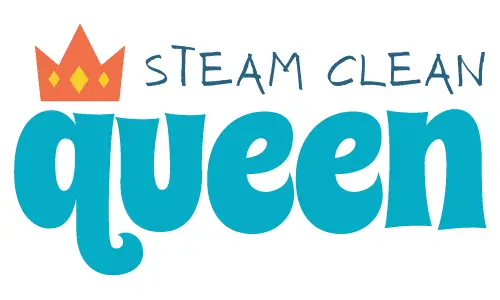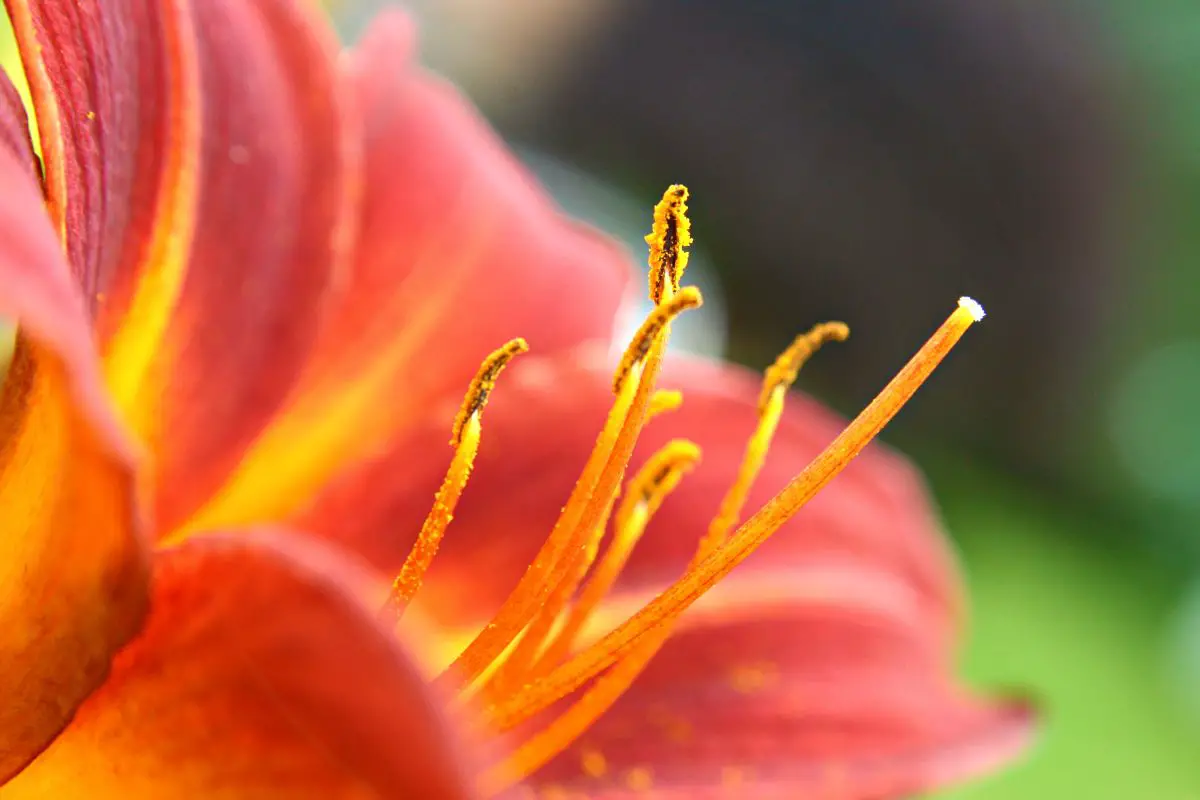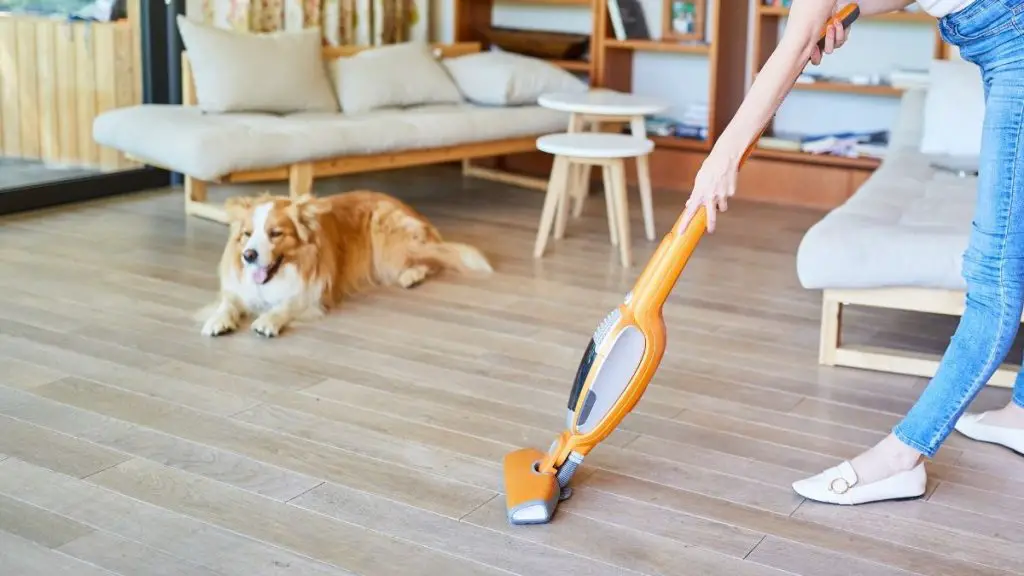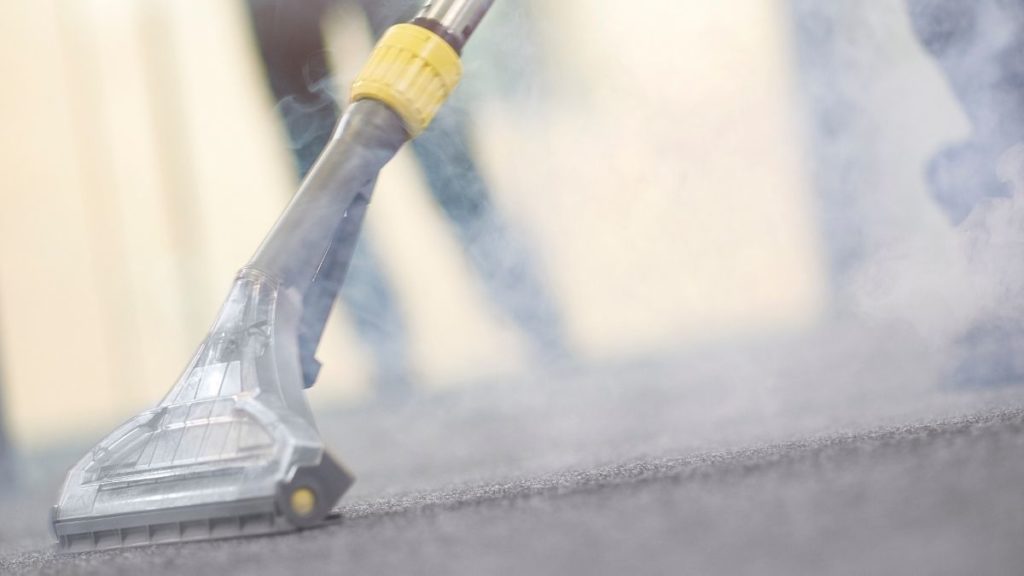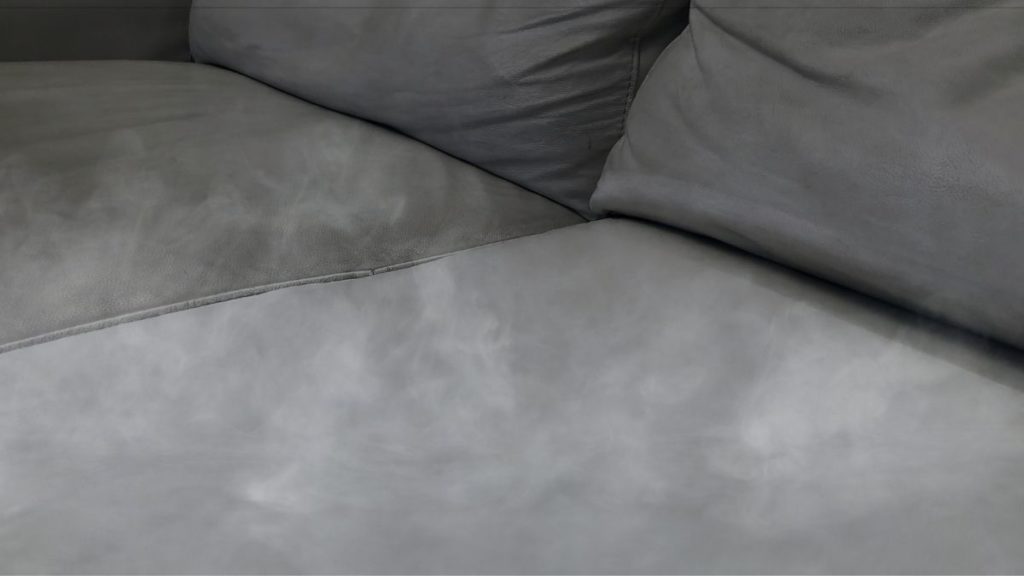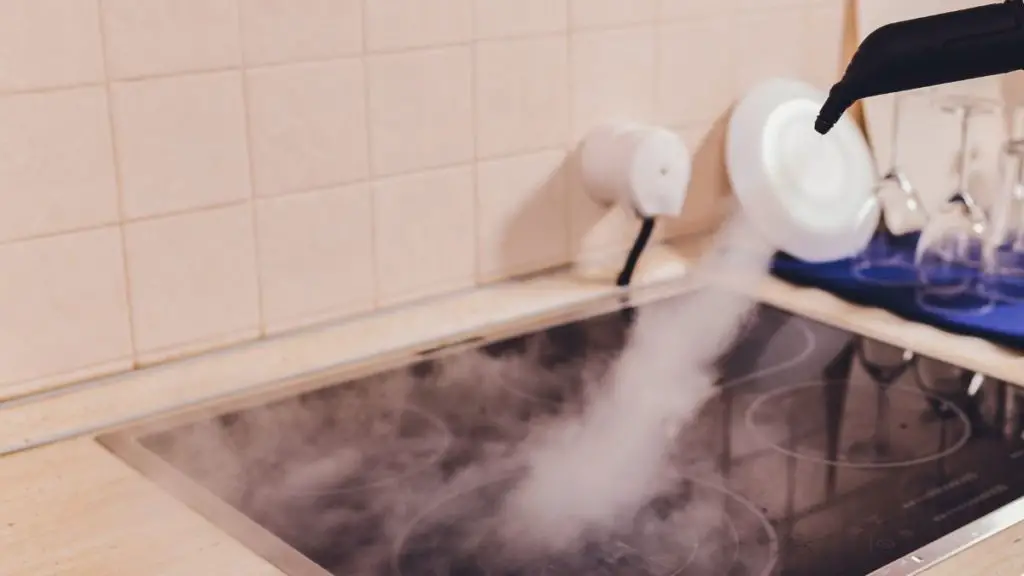How to Get Pollen Out of Carpet (Lily Flower Stain Removal Guide)
*As an Amazon Associate we earn from qualifying purchases. The price to you remains the same.
What’s the main reason why cleaning pollen is a nightmare?
Your average grain of pollen is less than 20 microns big. That’s less than one-tenth of a single pixel on your screen! But that’s not the end of your trouble. In all likelihood, you’ll be dealing with tens of thousands of pollen grains!
So, how do you get rid of this almost invisible (yet VERY visible) villain from your carpet and clothes?
Getting rid of carpet stains normally requires a liquid (water, vinegar, dry solvent). But with pollen, that’s not the case. Pollen is an essentially microscopic powder. Like baking soda, but even tinier. And getting powder substances wet is a BIG no-no!
Instead, using a simple household item you would never even think of, you will get rid of those lily stains forever.
Table of Contents
It’s scotch tape.
Sounds strange?
How to Clean Lily Pollen Stains Out of Carpet – 5 Steps to Bust the Mess
As I said, pollen grains are tiny (here’s how tiny). If rubbed with a cloth or sprayed with a cleaning mix, they go deeper and deeper into the fabric.
They get entrapped so deeply that even dry cleaners or washing machines can’t get rid of them completely.
The stickiness of scotch tape picks up the pollen while it’s still on the surface, without pushing it deeper into the fabric. It’s a simple, yet enormously effective cleaning method many professional cleaners use.
And many wedding florists too!
Pro tip #1: A great alternative to scotch tape when dealing with pollen on your carpet is the good-old sticky cleaning roller. That is, your average lint roller that you use to remove hair from carpet and clothes!
Here are the steps you need to take:
- Gently swap the stain with the sticky cleaning roller. This way, you’re lifting the pollen stains from the carpet’s top surface. (Emphasis on the gentle part!)
- Use around 5 inches of scotch tape and tap onto the stained area. It picks up the pollen that the lint roller missed. If the tape is saturated and no longer sticky enough, use another one.
- With a new piece of scotch tape, go into a CCW (counter-clockwise) direction while pressing on the stain.
- After the second piece of tape is done, use a portable vacuum cleaner to vacuum up the spot.
- For preventing any future allergies from the pollen, it’s wise to steam clean your carpet.
Pro tip #2: Working the scotch tape in a counter-clockwise direction lifts the pollen that went slightly deeper into the fabric.
Instead of a portable vacuum cleaner, use a more powerful shop vac if you have a lot of mess. The vacuum picks up the grains that managed to go “down under” into the carpet’s fabric.
Dry Cleaners, Baking Soda & Vinegar, Bleach: Will Any of This Work?
Using any of your regular cleaning supplies on pollen would be a MONUMENTAL mistake!
It sounds counter-intuitive, but it all has to do with science.
To understand lily (or any other) pollen and why dry cleaners aren’t the best aide, you need to learn a bit about bio-organic material!
No, I’m not telling you to get a Ph.D. in botany or rent 10 books on plant dispersion and viability.
The thing is, pollen falls into the bio-organic stain group. Tetrachloroethylene (a complex compound to spell) is most common in dry cleaners bought in stores. Tetra… something-something (industry-called PERC) is best suited for oily stains and takes care of water-soluble ones, too. But, one can’t dissolve the other.
See how PERC and pollen don’t quite go hand in hand? So, what’s the solution here?
Enzyme cleaners!
It’s like the power of dry cleaners morphed into a kind of cleaner precisely made for taking care of organic stains and odors.
Enzyme cleaners are designed to tear down bio-organic compounds like pollen. Use an enzyme cleaner after vacuuming the stained area and before steam cleaning it.
There are many all-mighty enzyme cleaners on the market. But my favorite is Biokleen’s enzyme cleaner. It’s the only one that’s plant-based without any artificial dyes or fragrances.
Why Shouldn’t I Clean Pollen with Bleach?
Bleach is a wonderful cleaning tool for so many different stains. But NOT for removing pollen out of the carpet!
The risk-reward ratio between damaging the carpet’s fabric and getting rid of pollen stain is gigantic. In that case, I wouldn’t dare touch my carpet with bleach.
It’s effective when cleaning pollen stains from plastic garden furniture, like garden tables, but not so great with clothes and carpets.
Except, there is one kind of bleach that won’t destroy your carpet – oxygenated bleach such as OxiClean!
It’s the only kind of bleach that won’t discolor your carpet, while at the same time dissolving organic compounds.
Pro tip #3: Did you know you can DIY OxiClean? Why waste several bucks on something that’s made by simply using several ingredients already found in your home!
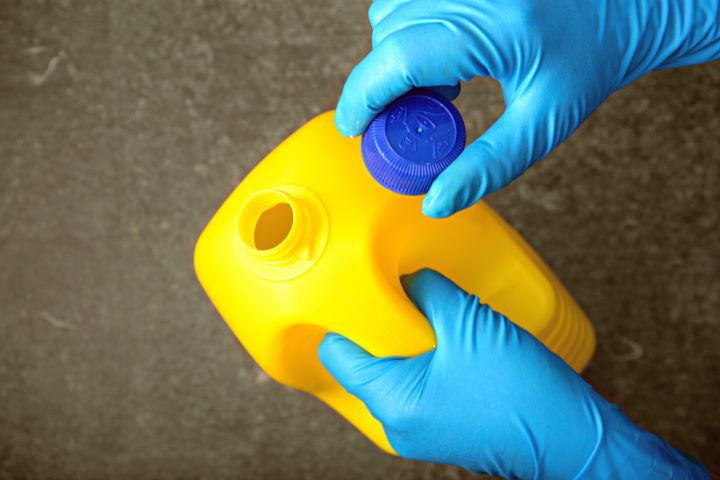
Can Isopropyl Clean Pollen Stains?
Isopropyl alcohol normally works wonders for dissolving oil-based stains. I’m talking about paint, oil, and liquid latex. But what about pollen?
Not so good at all!
Damping this kind of stain with isopropyl will only make things worse. That’s why don’t go anywhere near it with isopropyl.
And what about baking soda and vinegar mix?
Can Vinegar with Baking Soda Help?
Not really.
Baking soda and vinegar are a powerful cleaning mix when it comes to wine, lipstick, battery acid, gasoline stink, and other types of stains. Most of them are chemical, non-organic stains that need to be neutralized by baking soda and dissolved by the alcohols from vinegar.
But in this situation, that’s just not the case.
Trying to spread baking soda all over the pollen-stained area will only dampen it. Essentially, creating more harm than good. Wet powder (especially colored such as this one) is the worst kind of plant stain.
What to Do if the Stain Is Wet?
So the worst happened.
You doused the stain with one liquid or another, and now you’re left with a mess even some professional cleaners would shrug off. How do you get rid of it?
It’s not that complicated. Just Shine a Little Light on the stain.
Ehem… Not the actual song from the Black Keys, but the real sunlight. (Either way, nobody would mind a piece of good ol’ rock & roll when dealing with stains. It suits the nerves when dealing with such a mess.)
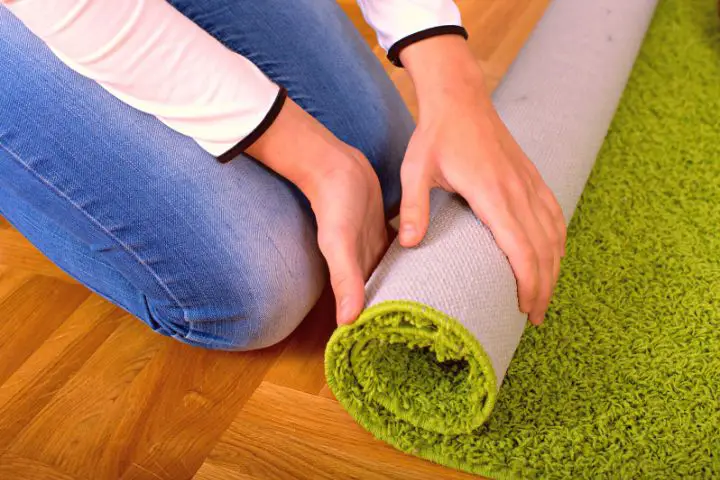
Here are the steps on how to do it:
- If your carpet is small enough to be carried out outside, put it on the front lawn for an hour, so the stain dries out.
- If your carpet is gigantic, use a hairdryer to dry out the stain. That’s not all. After the stain has become dry as gun powder, use a UV light to illuminate the area for 30 minutes.
- Use the scotch tape to pick up what’s left of the decomposed stain.
- As the last cleaning blow, vacuum the area and treat it with an enzymatic cleaner.
Pro tip #4: Leaving the pollen stains in the sun allows the UV part of the sunlight to press the DESTRUCT button for the pollen pigment.
Organic matter doesn’t like exposure to UV rays. And without an anti-UV coating to protect it, carotenoids (plant-produced pigments) go into photodegradation (decomposition process when exposed to sunlight).
(You didn’t expect a small biology lesson in a cleaning article, did you?)
This process could be artificially created by using a small UV light on the affected area of your carpet. The “sunlight” trick is not only good when dealing with your carpet, but also clothing.
Vacuum or Not (and How)? Say Goodbye to Your Hay Fever
Ah, spring has arrived, and with it, all kinds of troubles topping even the Lilly pollen stains.
Pollen-triggered allergies are one of the leading causes of breathing problems and asthma triggers. They go by the notorious name of hay fever. (Yep, it doesn’t have much to do with actual hay!)
Watery red eye, runny nose, and heavy breathing are all signs of this menace affecting your kids and yourself.
So how do you hay-fever-proof your house and get rid of allergy triggers in your carpet?
Here’s what you gonna do:
- Check your vacuum cleaner filters. Clean or replace them. Bad vacuum filters create more problems.
- Thoroughly vacuum carpets in the entrance area of the house. It’s where the most of the pollen and grime from the shoes, is located.
- Vacuum the staircase area and spots around the windows.
- Find moist locations in your house and see if any mold has developed.
- Steam clean them too (corners, tiles and grout), not just the carpeting.
Pro tip#5: HEPA vacuum filters are a type of investment worth every penny. Especially if your nose is easily triggered by different allergens. HEPA (High-Efficiency Particulate Air) filters are the only filters on the market capable of removing 99.7% of pollen, grime, and other nasty stuff.
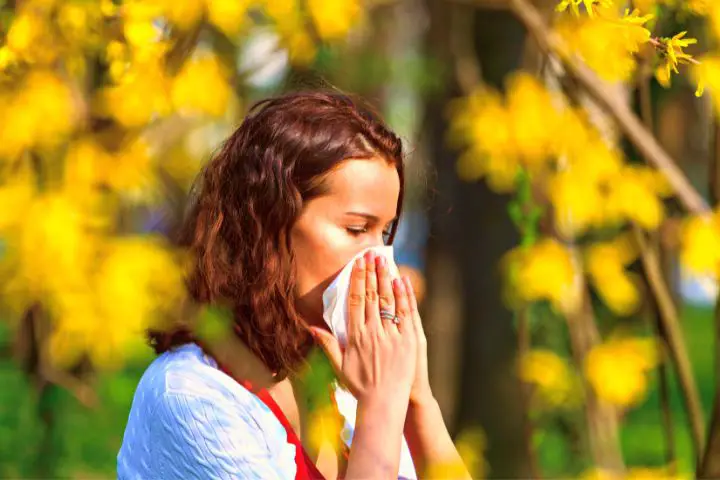
With regular vacuum filters, you don’t stand a chance of beating the hay fever. Your vacuum cleaner is just sucking in the pollen and pushing it outside again through motor cooling vents.
Let’s Recap!
Whatever you do, do NOT introduce water to the pollen stains on your carpet. You’ll make a bad situation even worse!
Instead, use a simple, yet magical property of scotch tape’s stickiness to pull the grains out of the carpet’s fabric. After the scotch tape has done its miracle work, use enzyme cleaners to remove the rest of the stain.
As a final touch, give your carpet a run-over with a vac that has a HEPA filter. And don’t go anywhere near the pollen-stained carpet with chlorine bleach, baking soda or vinegar!
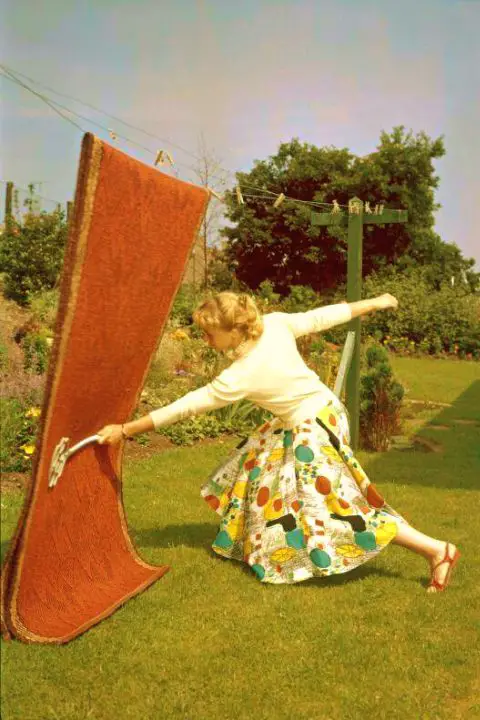
Frequently Asked Questions
How to Clean Lily Pollen Stains Out of Clothes?
Sunlight and scotch tape are your best tools in this case.
Leave your pollen-stained shirt in the sun a couple for a couple of hours, for the sunlight to do its photodegradation. A fancy word for dissolving organic matter with sunlight.
Afterwards, use the scotch tape to pick up what’s left of the stain.
If a lot of pollen has dropped onto your shirt, use an enzyme cleaner after those steps to further purge the stain from the fabric.
Will Lilly Pollen Stains Come Out?
Yes, but whatever you do, do NOT get them wet.
Water is your enemy, and avoid using it at all costs in this case. Water will only push the Lilly pollen deeper into the fabric and make those stains permanent for life!
Instead, use a scotch tape or even a sticky cleaning roller to pick up Lilly pollen from the fabric and treat the area with an enzyme cleaner.
Steam-cleaning the stain afterwards is a great thing to do. High-temp steam kills 99% of bacteria and organic matter.
